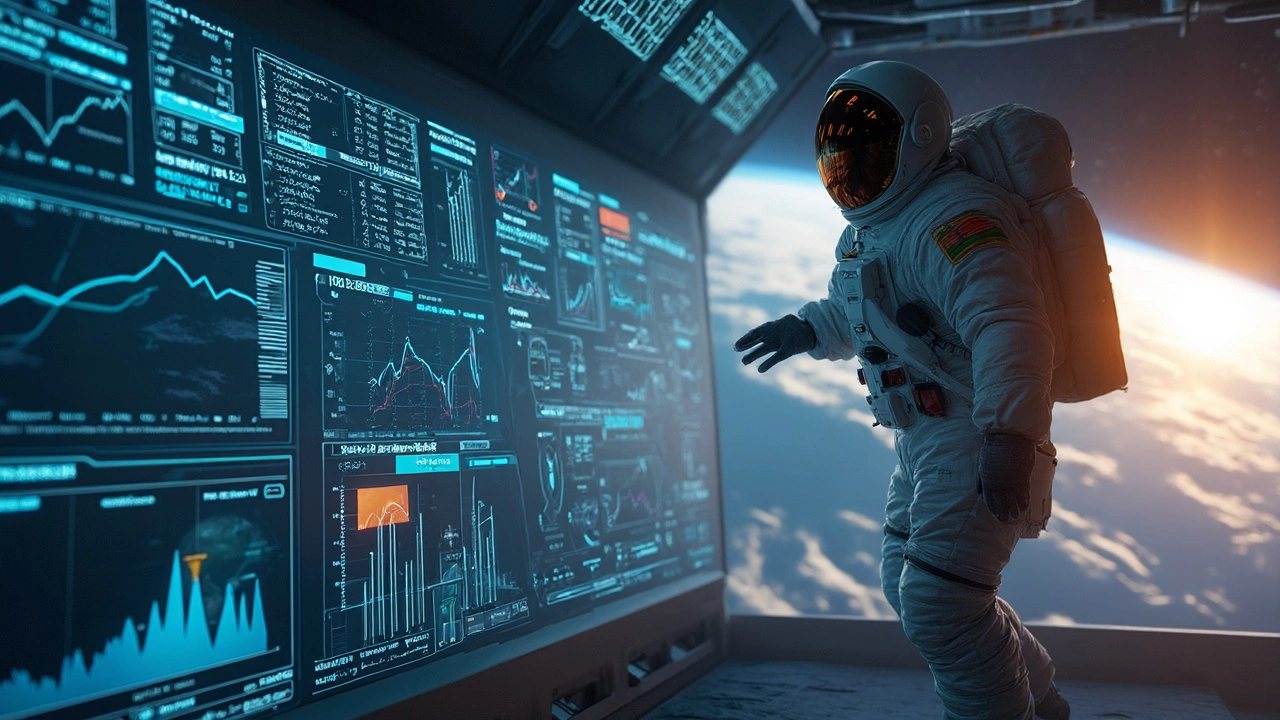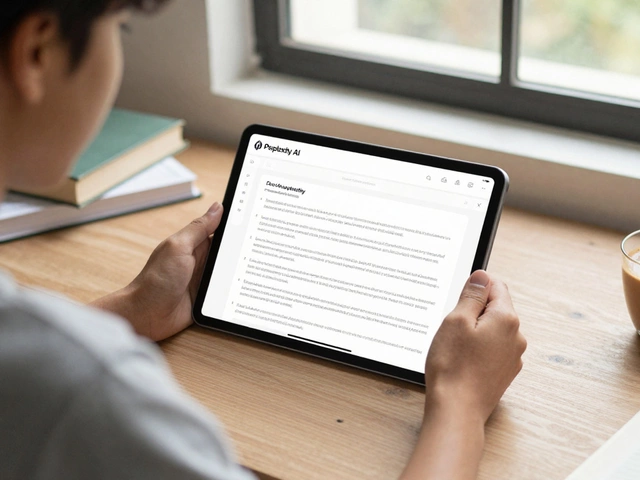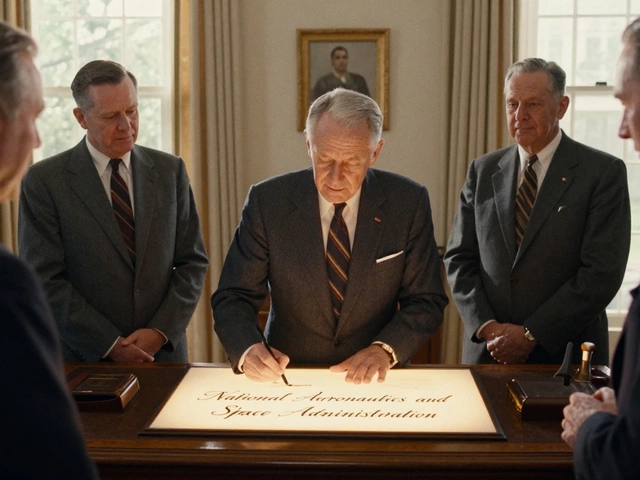Space travel isn't just a sci-fi dream anymore; it's becoming more of a reality, at least for those with a very thick wallet. Thinking about taking a trip to space? Well, you better sit down when you hear about the costs involved. Even a quick pop up to the edge of our world comes with a pretty hefty price tag.
The most well-known price point is for space tourists. Companies like Blue Origin and Virgin Galactic are offering suborbital flights that hover around the $200,000 to $250,000 range per ticket. It's a steep price for a few minutes of weightlessness, but it's also a chance to be among the pioneers.
For those dreaming of extended adventures, maybe even to the International Space Station, you're probably looking at coughing up millions. These longer journeys are still mainly reserved for professional astronauts, who undergo years of training. The cost of sending one astronaut can easily surpass $50 million, covering everything from training to travel logistics and ensuring survival in the vacuum of space.
- The Basics of Space Travel Costs
- Prices for Aspiring Space Tourists
- Expenses for Professional Astronauts
- Breaking Down the Costs
- Future of Space Travel Pricing
- Budgeting for Your Space Adventure
The Basics of Space Travel Costs
So, you want to know what it takes financially to slip the surly bonds of Earth? Let's break down the essentials that make up the expenses involved in space travel. Whether you're eyeing the stars as a would-be astronaut or a space tourist, costs are a huge factor.
Breaking Down the Costs
The costs are often categorized into a few areas: training, transportation, logistics, and survival. Each part is crucial and adds to the overall price tag.
- Training: Astronaut training isn't a walk in the park. Whether it's learning how to operate in zero gravity or dealing with emergencies, the training process is both rigorous and costly. Think of it as a crash course in survival up there.
- Transportation: The ticket to space is undeniably expensive. You have to account for the cost of rocket fuel, spacecraft construction, and the crew needed to get you there. It all adds up to some serious cash.
- Logistics: Getting to space is one thing, staying there requires a lot more. From life-support systems to food and everything in between, logistics are a significant part of the expense.
- Survival Gear: Space isn't exactly friendly. Specialized suits and equipment designed to keep you alive don't come cheap.
Astounding Numbers
If you think it's just a few dollars here and there, think again. Space travel costs can soar into the millions for each astronaut. Just getting a spacecraft ready can easily reach up to $90 million per launch. For perspective, launching a satellite can cost anywhere between $50 and $400 million, depending on the payload and distance.
Commercial Space Travel
With companies like Blue Origin and SpaceX stepping into the mix, there's hope that these costs might come down eventually. For now, the pricing remains high, but as technology advances, we might see some changes in these sky-high numbers.
In short, we're talking about complex machines, safety measures, and technical skills beyond the ordinary. All this makes space travel a costly affair. But, it's the price of stepping into a world that's quite literally out of this world.
Prices for Aspiring Space Tourists
Dreaming of becoming a space tourist? Well, you're not alone. It's a thrilling yet expensive adventure, and recent years have seen a surge in companies offering to make this dream a reality—for those who can afford it, that is.
Leading the charge in the commercial space tourism race are companies like Blue Origin and Virgin Galactic. Blue Origin’s New Shepard offers a suborbital flight where you can experience a few minutes of weightlessness. The ticket price? Approximately $250,000 per seat.
Virgin Galactic isn't far behind with its VSS Unity, promising a similar experience for about $450,000. It might seem steep, but the ticket buys you a front-row seat on a spaceship, along with multiple days of pre-flight training and preparation.
What's Included in the Ticket Price?
- Training: Before taking off, you’ll receive days of training to ensure you know what to expect and can handle the physical ordeal of space travel.
- Accommodation: Your stay during the training period is often included, usually in a luxurious astronaut village or dedicated accommodation facility.
- Mission Gear: Items like a custom-fitted space suit and mission patches are yours to take home, serving as everlasting mementos of your epic journey.
If we're looking at longer stays or trips that reach the International Space Station (ISS), we're talking about prices from companies like SpaceX running into the tens of millions. Axiom Space, for instance, lists missions to the ISS costing around $55 million per seat.
Is it Worth the Cost?
Now, you might wonder, is it worth it? Many of the world's wealthiest say yes, driven by the urge to explore the unknown and the amazing, life-changing experience. But remember, this doesn't just buy you a ticket—it gets you a formal entry into a new age of human exploration.
| Company | Service | Price (USD) |
|---|---|---|
| Blue Origin | Suborbital Flight | $250,000 |
| Virgin Galactic | Suborbital Flight | $450,000 |
| SpaceX (Axiom) | ISS Mission | $55,000,000 |
So if you've got some cash to burn and want to see the Earth from a spectacular new perspective, maybe it's time to book your spot for a trip to the stars!
Expenses for Professional Astronauts
Ever wonder what it costs to send a trained astronaut into space? Well, buckle up because the numbers might make your head spin. First off, you’re not just paying for a one-way ticket out of Earth's atmosphere. There's a whole bunch of stuff that adds up to the final bill.
Training and Preparation
Before even setting foot in a rocket, professional astronauts go through rigorous training that's almost expensive as the flight itself. NASA spends around $2.5 million per astronaut in training alone. This includes physical conditioning, learning about spacecraft systems, and getting familiar with zero-gravity situations.
Spacecraft and Launch
The launch is where the costs skyrocket. Launching a single astronaut on the Russian Soyuz, for example, was around $80 million per seat as of the early 2020s. While this price might come down with new entrants like SpaceX's Crew Dragon, we're still talking tens of millions for a ride.
Living and Operating in Space
Once you've reached the International Space Station (ISS), there's the cost of staying and working in space. Food, water, and oxygen are not just picked up at your local store. Supplying these essentials can cost thousands of dollars per day for each astronaut. Not to mention the cost of maintaining life support systems and scientific equipment.
Return Trip and Recovery
Getting back from space isn't just hopping on a return bus. The return journey demands just as much care and technology. Recovery operations once the capsule lands back on Earth add to the tab, ensuring astronauts return safely and equipment is salvaged.
Here's a quick glance at some typical costs:
| Expense | Estimated Cost |
|---|---|
| Training | $2.5 million |
| Launch | $80 million per seat |
| Daily ISS Stay | $10,000 |
| Return and Recovery | $4 million |
The astronaut expenses from training all the way back to recovery are meticulously planned and budgeted. While these figures are enough to give anyone sticker shock, each penny ensures the safety and success of every mission. As space travel grows, we might see these prices drop, but for now, space remains a billionaire's playground.

Breaking Down the Costs
So, why does space travel cost so much? The first thing to know is that getting to space is all about overcoming gravity—it’s literally rocket science. But let's break down what that means in terms of actual dollars and cents.
1. Rocket Launch and Fuel
The most obvious expense is the rocket itself and the fuel needed to escape Earth's atmosphere. Rockets aren't cheap—they cost millions to build from scratch. For instance, the fuel alone for launching one of SpaceX’s Falcon 9 rockets can be several hundred thousand dollars per flight.
2. Crew Training
Before anyone even boards a spacecraft, there's an extensive and expensive training process. Astronaut training spans years and includes simulations, survival training, and learning how to manage emergencies in space. It's not just about flying a machine; it's about surviving in a hostile environment.
3. Equipment and Health Checks
Astronauts also require special equipment, like spacesuits, which are extremely costly to design and manufacture. Regular health checks and maintaining the physical fitness of the crew also add to the expenses.
4. Spacecraft Maintenance and Operations
It doesn't stop at just launching a rocket. The spacecraft systems need constant monitoring and maintenance. Operations crew on the ground work around the clock, adding to the cost of any mission.
5. Factors Affecting Space Travel Cost
We can’t forget insurance and post-flight evaluations. After all, you need to ensure the safety of both equipment and personnel. The commercial companies also factor in profit margins to continue research and development for future space endeavors.
Example Cost Breakdown
| Expense | Approximate Cost |
|---|---|
| Rocket Launch and Fuel | $28 million |
| Crew Training | $10 million |
| Equipment | $12 million |
| Spacecraft Maintenance | $15 million |
| Insurance | $5 million |
With all these costs combined, you can see why the price tag shoots up so high for these trips. As technology advances and the industry finds more efficient ways to operate, the hope is space exploration costs will eventually come down.
Future of Space Travel Pricing
Wondering if space travel costs are going to drop anytime soon? You're not alone. There's a lot of buzz about making this astronomical adventure more accessible for regular folks. The first thing you should know is that a bunch of companies are racing to bring prices down, banking on more efficient technologies and increased competition to do the trick.
The Role of Competition
With players like SpaceX, Blue Origin, and Virgin Galactic all vying to be the market leader, competition is fierce, and that's excellent news for potential space tourists. More companies mean more innovation, and ultimately, a reduction in costs as they find ways to outdo each other on price and service quality.
Technological Advancements
Technology is another big player in reducing space exploration expenses. Reusable rockets are a game changer. SpaceX's Falcon 9, for instance, is designed to be flown multiple times, significantly lowering the cost per launch. It's like flying a commercial airplane repeatedly rather than building a new one for every trip.
| Year | Projected Cost for Space Travel |
|---|---|
| 2025 | $200,000 - $250,000 |
| 2030 | $50,000 - $100,000 |
Economies of Scale
Another factor is economies of scale. As more people are willing to pay for a trip to space, production increases. This can lead to a decrease in the average cost per passenger, making space travel more affordable.
Regulatory and Safety Improvements
While it's fun to dream, we can't ignore regulations and safety, which also play a crucial role. Improving these factors can streamline operations and help lower costs over time. The more reliable and safer the systems become, the less we'll need to fork out for insurance and other safety nets, giving a little wiggle room for lowering prices.
In short, while we're not likely to book budget space flights just yet, the trajectory is heading that way. And who knows? Maybe in our lifetime, heading to the stars could be as common as hopping on a long-haul flight today.
Budgeting for Your Space Adventure
Dreaming of a trip to space can be exhilarating, but turning that dream into reality calls for some serious financial planning. While most of us don’t have the cash tucked away for a quick jaunt to the stars, you can start preparing strategically.
Understand the Costs
First off, know what you're up against. As mentioned, a seat on a commercial suborbital flight with companies like Virgin Galactic can set you back around $250,000. Want something more extravagant, like a trip to the International Space Station? You're looking at $50 million or more.
Plan Your Savings
Start by setting a savings target based on the type of space trip you aim for and your existing finances. Break it into smaller, achievable milestones. Say you're aiming for that $250,000 flight; divide it into yearly, monthly, and even weekly savings goals.
Invest Wisely
If saving in a traditional way seems daunting, consider investments that can grow your wealth over time. Look into stocks, bonds, or mutual funds. Consulting with a financial advisor to diversify your portfolio might be a good step too.
Make Sacrifices
Reaching the stars will take some sacrifices. Could you scale down unnecessary expenses or sell off unused assets? Redirect that extra cash towards your space savings fund.
Seek Sponsors
Sponsorship might not sound traditional for a vacation, but if your space journey ties into business research or media coverage, companies may want to foot some of your bill.
| Expense Type | Average Cost |
|---|---|
| Suborbital Flight Ticket | $250,000 |
| Trip to ISS | $50 million |
While the costs seem astronomical (pun intended), the thrill and uniqueness of space travel could make it worth every penny. Dream big, plan smart, and maybe, one day, you’ll join the ranks of space explorers. Keep an eye on emerging companies and tech that may drop these prices as space tourism evolves.





